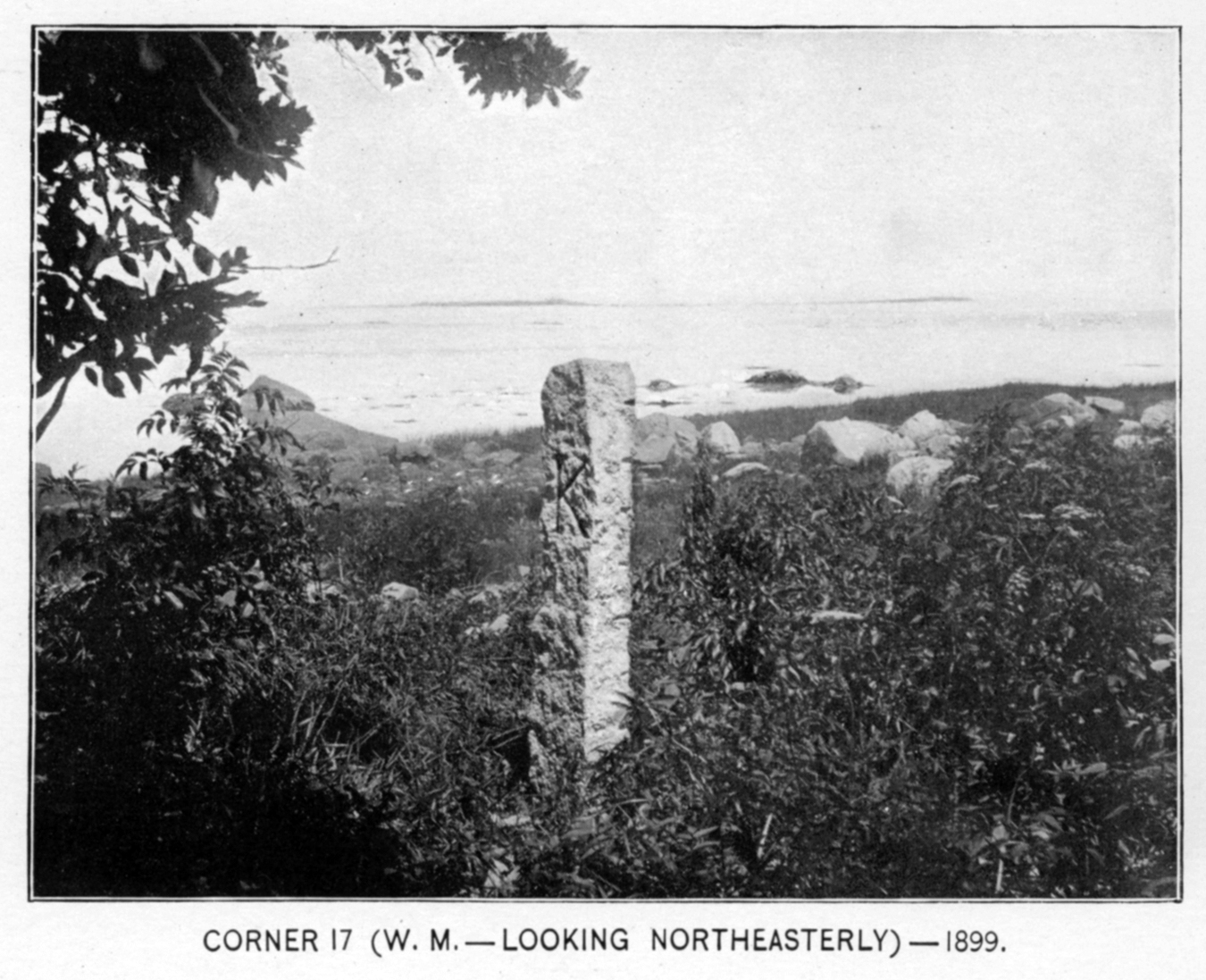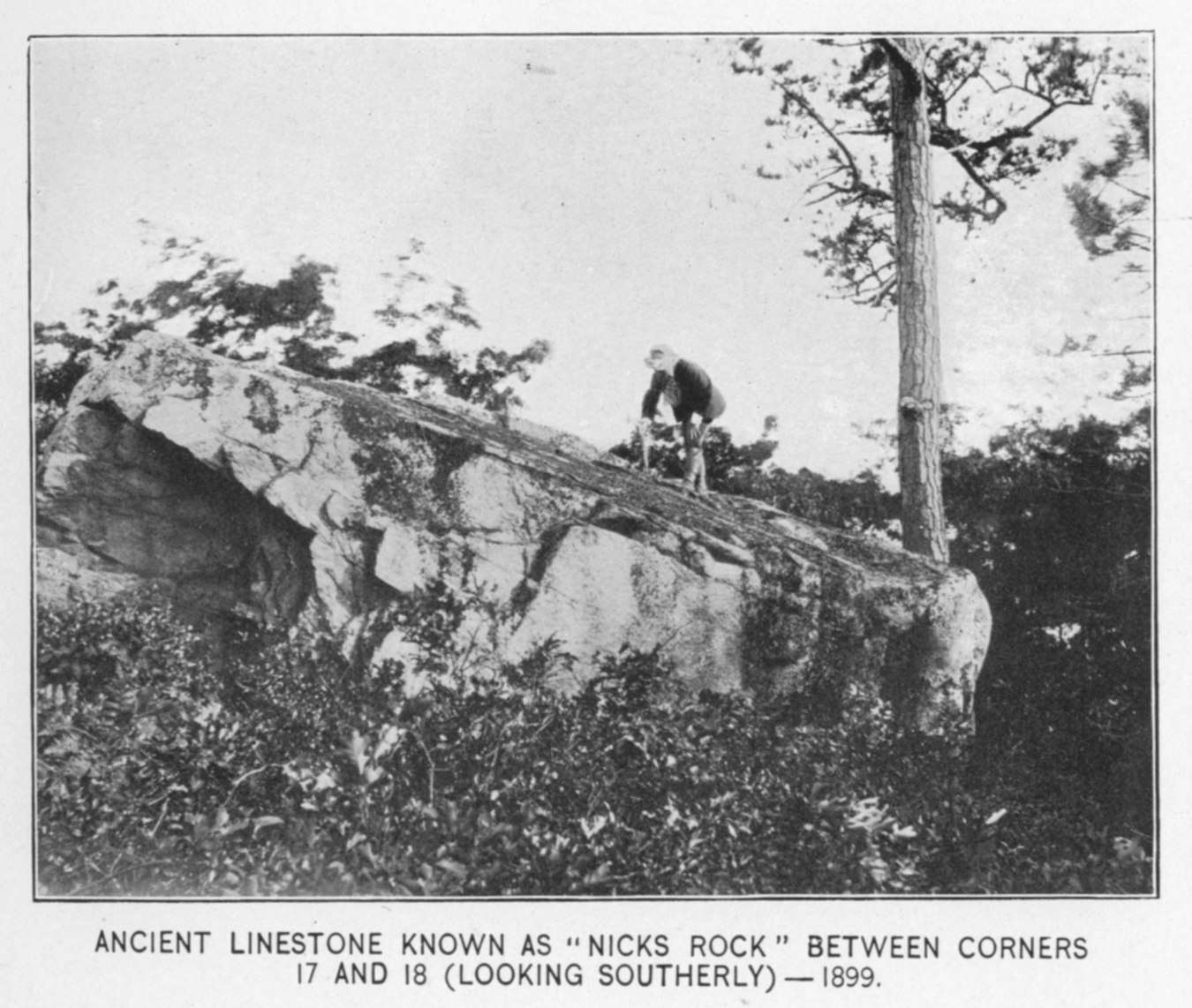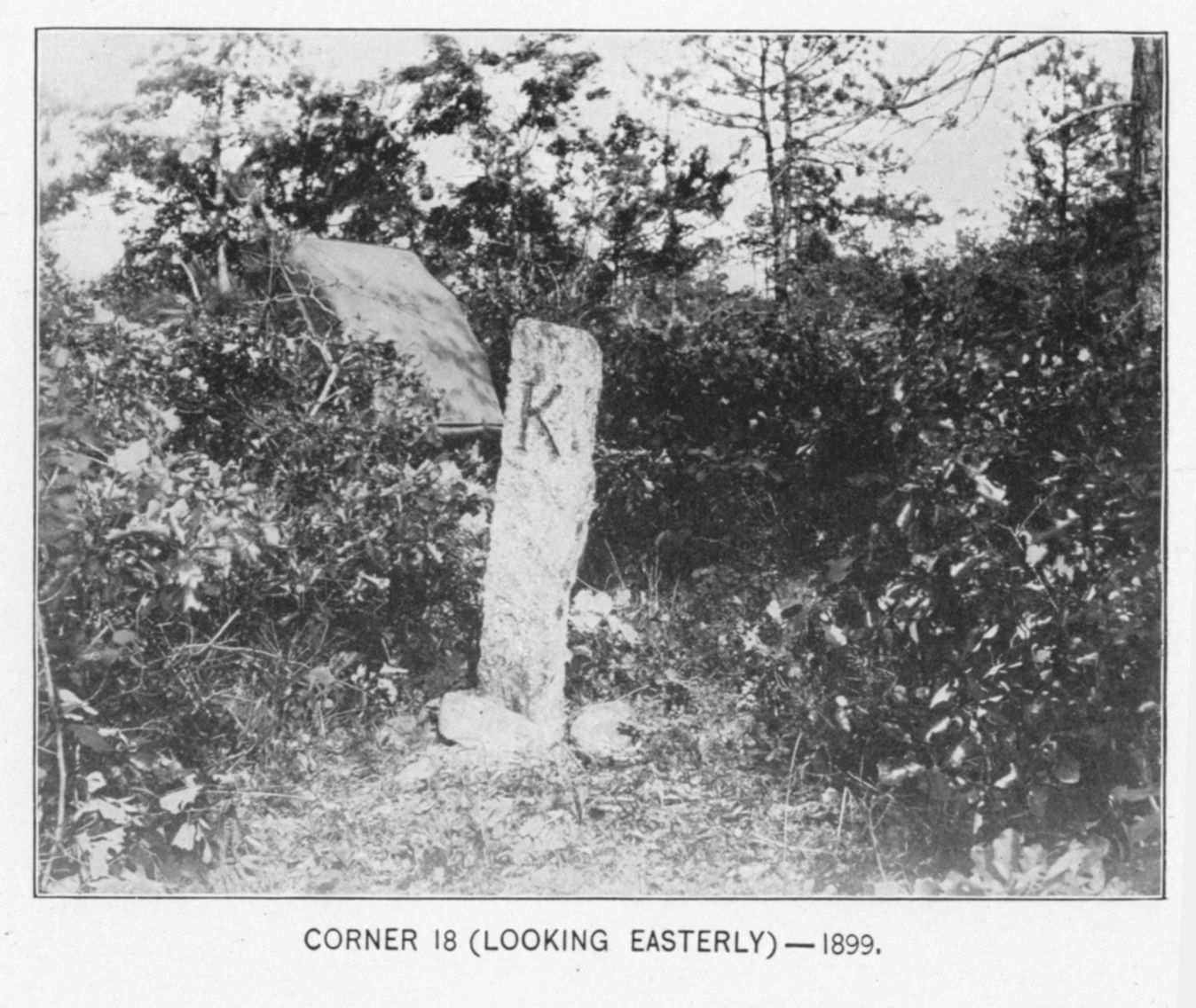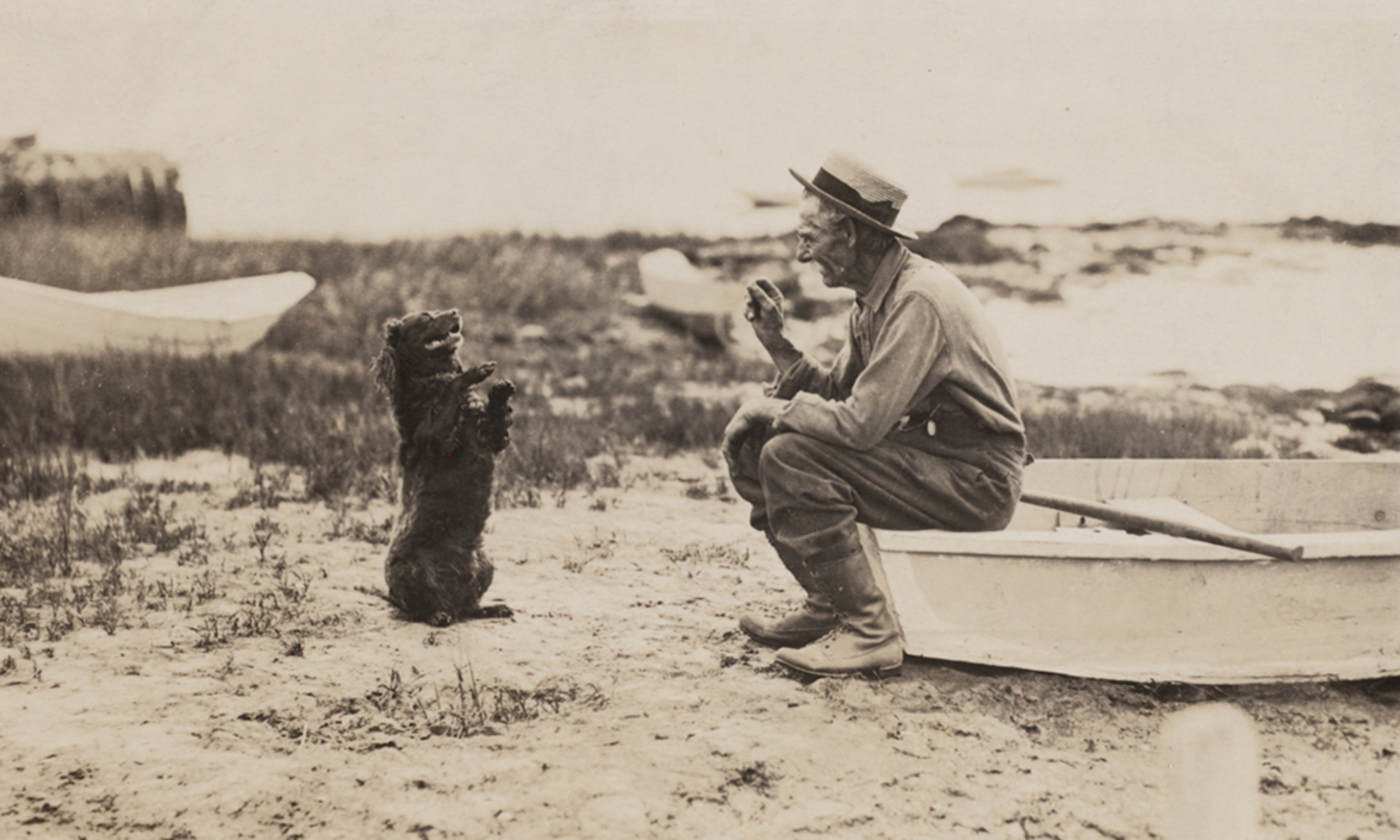Published in 1899 by the Commonwealth of Massachusetts’ Topographical Survey Commission, The Atlas of the Boundaries of the Town of Kingston describes the 18 corners marking the town limits and the seven “triangulation stations” used to locate the corners. The Atlas includes the statutes that formally defined the boundaries, textual descriptions, a scale map of the town along with details of each corner, two tables of geographical data and nicely captioned photographs.

Among the readily identifiable landmarks, such as Monk’s Hill, the Kingston Unitarian Church and the Standish Monument, is one known to many but now gone: Nick’s Rocks.
In the 1920’s Emily Drew wrote
Nick’s Rock on the line between the towns of Plymouth and Kingston, not far from Monk’s Hill is one of three rocks in Kingston which “testify” to the visits of the Devil as imprints of his feet and hooves prove “conclusively” that such visits were really made. The other two rocks are both called Devil’s Rock. One lies near Bay Farm and the other in the brick-kiln pasture near C. Drew and Company on Stony Brook.
Nick’s Rock was also used as a boundary marker for the town line between Plymouth and Kingston. Originally the rock marked the way for Nick’s Rock Road, which was the main road from the early Plymouth settlement. The road branched at the rock with one direction heading towards Plympton and the other towards the Flaxing Place at Smelt Pond.

The 1899 Atlas locate Nicks’ Rock on the line between corners 17 and 18, at latitude 41 57 35.95 and longitude 70 42 59.64, and describes the landmark as
situated in the boundary line between Kingston and Plymouth, in a thick growth of low scrub oaks, with scattering yellow pines, about 75 feet west of a wood-road. It is a well know point being marked by a rock about 10 feet high and measuring 12 x 15 feet on the top, which slopes to the southwest. A good view is obtained for miles to the south and west.

Nick’s Rock is gone now, though a marker in the median strip of the new Route 44 just west of the Cherry Street overpass commemorates this bygone stone.
